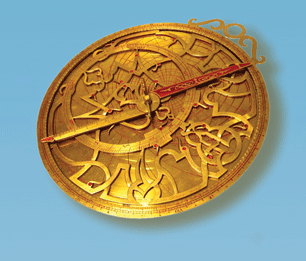 If you have ever sailed on the ocean in a fog or at night, you know that your instruments are your life. When you look around and everything is murk, you need that compass, that GPS system. In fact, even when the clouds lift, or dawn breaks, the instruments remain important, because when you’re on the sea, winds shift constantly, and so do currents and tides. Whether it’s your first time or your hundredth at the helm, you have to know where you are and where you’re going, and the instruments are the key.
If you have ever sailed on the ocean in a fog or at night, you know that your instruments are your life. When you look around and everything is murk, you need that compass, that GPS system. In fact, even when the clouds lift, or dawn breaks, the instruments remain important, because when you’re on the sea, winds shift constantly, and so do currents and tides. Whether it’s your first time or your hundredth at the helm, you have to know where you are and where you’re going, and the instruments are the key.
In a theological school, the winds of social, ecclesial, and theological importance shift on a regular basis too. A school’s mission is its “true north,” and as sailors, the members of the board — along with the president, key administrators, and faculty — must tack and sometimes avoid obstacles while remaining focused on the destination. If they’re going to stay on course, sailors need to be reminded — over and over — how to use their instruments.
Get newcomers up to speed
One of the most common complaints I hear from boards is that it takes too long for new members to get up to speed. At the same time, members in their second and third terms sometimes say that it’s hard to keep up, because things change so fast. Both these problems can be prevented if orientation is conceived as an ongoing process for all members, but with special attention for newcomers.
What kind of special attention? Even before an official in-person orientation session takes place, new members of the board should be given the following:
❏ Mission and strategic plan
❏ Annual budget and recent financial statements.
❏ Articles of incorporation and bylaws. If the school is embedded in a university, board members need the university’s bylaws too.
❏ Board handbook, if there is one. If not, consider creating one, using In Trust’s “Guide to Developing Your Board Handbook.” See www.intrust.org/boardhandbook.
❏ Conflict of interest policy and disclosure form.
❏ Contact information for board members, administration, and faculty. If possible, include brief biographies of every member, along with thumbnail photos.
❏ Handbooks for board, faculty, and staff.
❏ History of the school and the most recent fact sheet.
❏ Latest fundraising data.
❏ Map of campus.
❏ Minutes of the last two or three meetings.
❏ Policy manual, if there is one. For more about creating a board policy manual, see http://intrust.org/Magazine/Issues/Spring-2010/Maximizing-the-power-of-board-policies.
❏ Statement of board member expectations. A clear statement of expectations may include the following:
❏ Areas of knowledge. At minimum, members should have a basic ability to understand and oversee operational and capital budgets. They should also learn the institution’s endowment guidelines and investment policies and its policies for appointment, promotion, and tenure of faculty.
❏ Expectations for behavior. Board members should attend all meetings unless excused, and the attendance policy should be spelled out clearly. Requirements for committee membership, if any, should also be explained. Board members should also respect the boundaries that define the roles of the board, faculty, administration, and student. As a group, the board should accept the responsibility of assessing itself and the president regularly.
❏ Expectations for giving. Usually, a board member is expected to give to the annual fund every year and to participate in capital campaigns and other special development activities.
Every board will have other expectations, which should be articulated from the start. For more on developing a statement of expectations, see www.intrust.org/statementofexpectations.
Get the newbie a committee assignment — and a buddy
Some new board members know from the start which board committee will benefit most from their expertise and experience—indeed, sometimes board members are recruited precisely to join a specific committee. But if a committee assignment is not obvious, some boards invite new members to attend the meetings of a committee or two, just to see where they might fit best. Then, in consultation with the board chair, the new member can express a preference for committee assignments.
Active participation in committees is what makes most boards run smoothly. Every committee needs an up-to-date job description so that its mandate is clear. An orientation session can be a good opportunity to review the roles of and responsibilities of the various committees.
Once they’re on a committee and have attended their first meeting, new board members will have questions—lots of them! Yet sometimes the newcomer feels uncomfortable contacting the board chair or president when a question arises.
For this reason, pairing the newbie with a seasoned member in a buddy system may be a good idea. A call or e-mail to an assigned buddy is welcome and expected, and if they live near each other, the buddies can even make a lunch or coffee date to discuss puzzling board issues, oral traditions, articulated policies, and unwritten customs.
Forge strong relationships
Board members are volunteers, and for many, building relationships with fellow board members is part of the reason they’re willing to volunteer. But building relationships can be difficult when a board meets three or four times a year, and it’s even harder when members fly in and out with little down time to socialize with other board members.
Chairs and presidents need to be aware of this as they structure board agendas, and the official orientation session is a good time to begin. When members break bread together, when social hours are included during the official orientation (which all board members should attend!), and when opportunities for socializing are part of each board meeting, relationships will strengthen and trust will build. Learning about someone’s family, work, and hobbies may seem trivial, but when a rapport develops, making difficult decisions may become more manageable. But a word of warning: When board members are friends, they may be less willing to disagree publicly—and that means that necessary hard questions may go unasked.
 Seek input
Seek input
Orientation sessions cannot cover everything, but in the long run, board members really do need to know everything. This calls for continuing education for both old and new members alike. In most institutions, the governance committee is charged with keeping the board’s knowledge up to date. That means that regular updates from the governance committee are needed—including updates about lesser used policies, crisis plans, and enrollment guidelines. Ultimately, a survey of the whole board may be the best way for the governance committee to determine what board members need to know.
While the whole board serves as the ship’s crew, the governance committee itself is the keeper of the compass. If that committee understands that orienting the crew is its responsibility, it will be helping the board steer toward its mission, its true north.